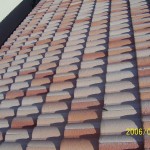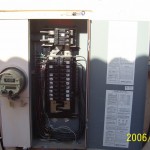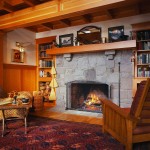What Do you look For When You Inspect Our Home?
Great question! Here is what all of our Phoenix Home Inspections cover:
The Structure is Inspected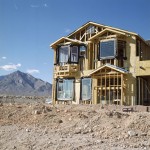
We will inspect the foundation and framing of your house. This also includes the basement, crawl spaces, concrete slabs, support beams and posts, ever component that is critical to providing stability, strength, and your comfort for the years to come.
The Exterior is Inspected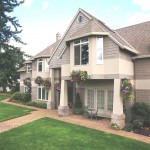
The exterior of your home envelops the many components that make up your home, and the primary function is to protect the building structure and interior from damages that can occur when exposed to the different elements, such as water, heat and even pests.
The Exterior Inspection Includes:
✓ Exterior Walls
✓ Flashing
✓ Trim
✓ All Exterior Doors
✓ Attached Decking ✓ Balconies
✓ Stoops / Steps / Porches and all associated railing
✓ ✓ Eaves / Soffits / Fascias (when accessible from the ground level)
✓ Vegetation
✓ Grading / Surface Drainage
✓ Retaining walls
Roof Inspection
Roofs are designed to protect you and your home from external elements, such as rain, wind and the Phoenix sun. The roof can also be used to support mechanical units for the house. The roof covering, drainage systems, flashing, skylights, chimneys and all other penetrations are thoroughly inspected for it’s proper condition and any defects caused by wear or improper installation, which may cause damage to your home.
Plumbing Inspection
The plumbing inspection includes 1) the water supply, 2) the drainage and waste system, and 3) the distribution systems (including all fixtures and faucets). These areas of your plumbing system will be inspected for proper water pressure and flow, any leaks, dripping, clogged pipes, proper sewage flow, garbage disposal, and drain fixtures. All relief valves all will be inspected as well.
Electrical Inspection
The electrical system is one of the most crucial components to you home. Most homes today have a minimum 100 Ampere power supply with 110/220 voltage capability or greater. Some circuit breaker types are prone to overheating and malfunction if not properly installed or maintained. Devices could affect the current homeowner or dwelling.
The Electrical Inspection Includes:
✓ The Service Drop
✓ Service Entrance Conductors
✓ Service Grounding
✓ Equipment & Disconnects
✓ Interior Components & Sub Panels
✓ Lighting fixtures
✓ Switches
✓ Outlets & Receptacles
✓ Ground Fault Circuit Interrupters (GFCI)
The Heating and Air Conditioning (HVAC) is inspected
The inspection of the HVAC system includes the evaporator coil, air handler, suction line insulation, drain lines,and condensate drain pans,filters,the coil, fan, mounting apparatus,ducting,venting and thermostat(s) where appropriate.The heating and cooling components will be reviewed for functionality and safety issues.Another key component of the HVAC system is the exhaust gas venting which is inspected to make sure they are working properly and safe. Venting issues include proper clearance to combustibles, slope, support as well as damage and restriction of the flue, vent connector and chimney. Other visual checks provided are the combustion air supply, the thermostat on all units located in the home, electrical connections and wiring, the condenser’s working status, safety controls functioning properly, heat and cooling modes are working, and the natural gas or fuel oil piping and system.
The Interior Is Inspected
There are a number of reasons why the interior of your home is inspected. First, it provides “clues” to possible structural problems. Second, often times roof and plumbing issues can be detected.
The overall interior finishes usually reflect the overall building quality, and by assessing your homes overall condition, we can better provide you with the overall maintenance necessary.
A couple examples included in an interior inspection are sufficient number of electrical outlets in each room, and adequate heating and cooling throughout your home.
The Interior Inspection Includes:
✓ Walls
✓ Ceilings
✓ Floors
✓ Stairs And Railings
✓ Steps
✓ Countertops
✓ Cabinetry
✓ Windows
✓ Doors
✓ Garage Door & Components
Insulation and Ventilation is inspected
Insulation and ventilation systems are designed to keep your house comfortable and structurally sound. Insufficient insulation and air leakage are leading causes of energy waste in most home, possibly yours. Insulation saves you money and helps conserve our nation’s limited energy resources.
A home properly and adequately insulated will make that house more energy efficient and comfortable for the household. Properly insulated homes help maintain a uniform temperature withing the house. The walls, ceiling, and floors will stay warmer during the cold winters, and they’ll also be cooler during our hot Phoenix, Arizona summers.
Insulation can also act as a sound dampener or barrier, keeping exterior noise levels to a minimum.
The purpose of your home ventilation system is to control odors, contaminants and indoor levels of moisture.
Important inspection points consist of the insulation and vapor retarders in unfinished spaces, the ventilation of attics and foundation area, the mechanical ventilation systems. You inspection report will also include descriptions of the insulation and vapor retarders in unfinished spaces, the lack or absence of insulation within unfinished spaces at conditioned spaces.
Fireplaces are inspected
There are different types of fireplaces, metal inserts, and masonry.
Metal inserts are comprised of a metal firebox which is inserted in the framework of your home. The metal inserts are usually solid burning fuel with gas logs. These components utilize single or double flues designed to extend through to the roof, or the side of your house.
Masonry fireplaces consist of blocks, or brick and mortar. These components utilize metal and clay liners, they are generally designed with chimneys.
Defects, in either case, can lead to damage to your homes structure, toxic gas leaks or poorly ventilated components.
Your home inspection of your fireplace will consist of the system component itself, the ventilation system, flues and chimneys. A description will be given, noting all defects posing potential safety concerns.
Your Pool and Spa Inspection Includes:
✓ Filter type
✓ GFCIs
✓ Grounding
✓ Skimmers
✓ Cleaning System
✓ Lighting
✓ Autofill
✓ Water features
✓ Diving board
✓ Slide
✓ Decking/ Tile
✓ Interior
✓ Gates/ Barriers
What Types Of Homes Does ATS Inspect?
We Provide Inspections For:
✓ Single Family Residential
✓ Multi Unit Housing
✓ Condos
✓ Townhomes
✓ Mobile Homes
✓ And Any Other Type Of Home!

